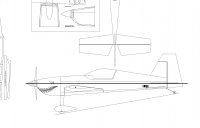acerc
640cc Uber Pimp
I missed this. I have numerous rolls of Ultracote so when I get back to the covering I will make a 12" square frame and finish it as I go along. When done I can weigh the Stits and Ultracote. It would be nice to know for sure exactly what the difference is.I’ve been debating Poly-Fiber versus Ultracote for the Python 100, and just can’t make up my mind.

